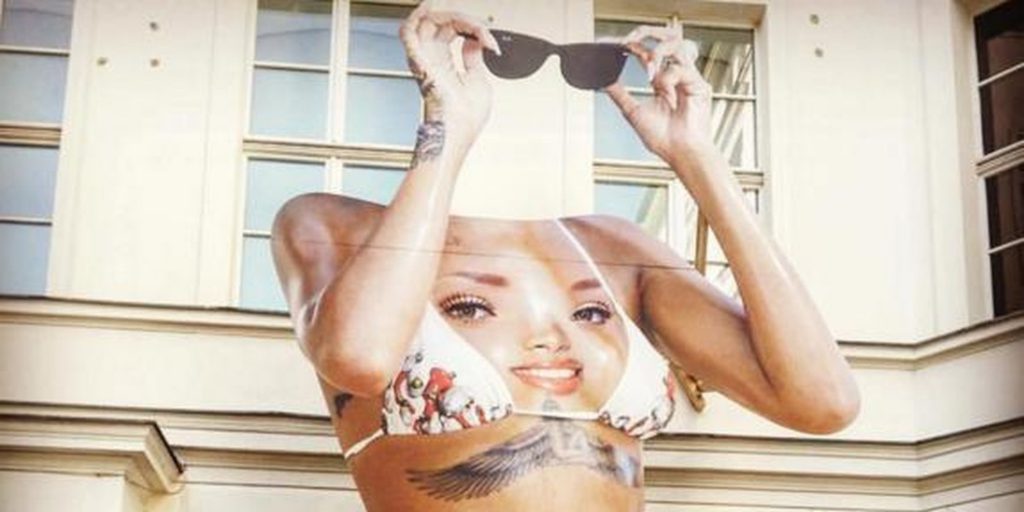
A former Nazi bunker, a boat on the Spree, an established art school, the former site of the GDR National Council– all of these Berlin locations became sites for the Berlin Biennale that ran this past June through September. The Biennale is a contemporary art exhibit that is held every two years and began in 1998. Organized by the New York-based curatorial collective DIS, this year’s Biennale was subject to mixed reviews from many critics. I became interested in the Berlin Biennale this past fall after a friend excitedly texted me a picture next to the giant, headless Rihanna sculpture featured at the KW Institute. Such a collection promised cultural references and a sense of humor in an age where contemporary art can be stern, removed, and serious. Over the course of the next month, I attended every Biennale site except for the boat tour.
The Biennale was a hyper-aware exhibit with meditations on the internet and the ‘post-internet’ age. Repeatedly, the collection exceeded ironic. For example, artist Debora Delmar installed a faux-juice bar entitled MINT (2016) at the Akademie der Kunst. The title refers to the minting of currency as well as the acronym used to describe the rising economic powers of Mexico, Indonesia, Nigeria and Turkey. The set-up, with ‘upcycled’ furniture and soothing decorations, is highly reminiscent of a cafe. Upon entering, in fact, I settled in at one of the tables and thought about buying a drink before realizing it was an exhibit and not an actual juice bar! The piece, as a result, offered little valuable commentary on the issues. Rather, it presented a slick rendition of a major political and economic situation that was snarky and lacked a clear intent.
Another piece that fell flat was the Blockchain Future States created by Simon Denny and Linda Kantchev and displayed at the European School of Management and Technology. This piece was composed of three real pitches for tech start-ups involving accessibility of data and data storage in a conference-like display. Because the piece was housed in a management school, it was difficult to latch onto the irony and social commentary that the work claimed to possess. Much like a joke with an all-too-subtle punchline, these works lacked the sincerity an audience needs in order to connect with the piece. In The Guardian, critic Jason Farago describes the works as “digital nihilism” and continues: “[T]o spit on the past and LOL at the present – is worse than arrogant; it is a puerile misunderstanding of what art is and what it can do.”
The collection shone at its most genuine moments. For example, Camille Henrot’s work Office of Unreplied Emails was composed of a series of replies to spam emails that went unread in the artist’s inbox. These replies were deeply personal and written in a delicate cursive script. The expressive nature of her replies contrasted with the structured and auto-generated tone of the spam emails. The result was a tender collection of works that questioned the role of sterilized language in the digital realm.
It is perhaps understandable why a Biennale that became world-renown for a Rihanna sculpture was accused by many of “airy naïveté and ironic enthusiasm,” as Hannah Black writes for Artforum. Black likens the reactions to the event with the reactions to many avant-garde movements of the past: “of bad politics and even worse taste.” The efforts of the Biennale clearly lacked optimism for modern life. While wandering through this collection, I also wondered why optimism was a quality I demanded from the art on display. In the end I found that much of the sarcastic works in the Biennale took the easy way out; they failed to question and challenge our modern circumstances and instead chose to see only inevitable collective doom on a dramatic scale. While much of the art displayed was conscious of contemporary issues, the works chose not to tackle but rather to mock them from an elite, distant vantage point.
